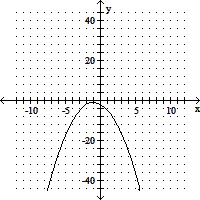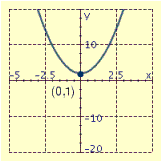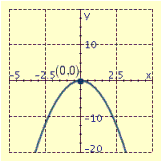Draw the graph of the equation and label the vertex.
A.
B.
C.
D.
Answer: C
You might also like to view...
Graph the quadratic function. Determine the vertex, find the equation of the axis of symmetry, find any x- and y-intercepts, and state the domain and range in interval notation.f(x) = -x2 + 2x
A. vertex: (1, 1)
axis of symmetry: x = 1
x-intercepts: 0 and 2; y-intercept: 0
domain: (-?, ?); range: (-?, 1]
B. vertex: (-1, 1)
axis of symmetry: x = -1
x-intercepts: 0 and - 2; y-intercept: 0
domain: (-?, ?); range: (-?, 1]
C. vertex: (1, -1)
axis of symmetry: x = 1
x-intercept: none; y-intercept: -2
domain: (-?, ?); range: (-?, -1]
D. vertex: (-1, -1)
axis of symmetry: x = -1
x-intercept: none; y-intercept: -2
domain: (-?, ?); range: (-?, -1]
Decide whether the statement is true or false. If the statement is false, give an example to show that it is false.A graph containing one or more vertices of degree 1 cannot have a Hamilton circuit.
Fill in the blank(s) with the appropriate word(s).
Find the greatest common factor of the numbers.120 and 280
A. 5 B. 40 C. 20 D. 8
Find the distance in the xy-plane between the two points. Round an approximate result to the nearest hundredth.(4.6, -0.5) and (2.6, -4.5)
A. 8.94 B. 4 C. 2.24 D. 4.47



